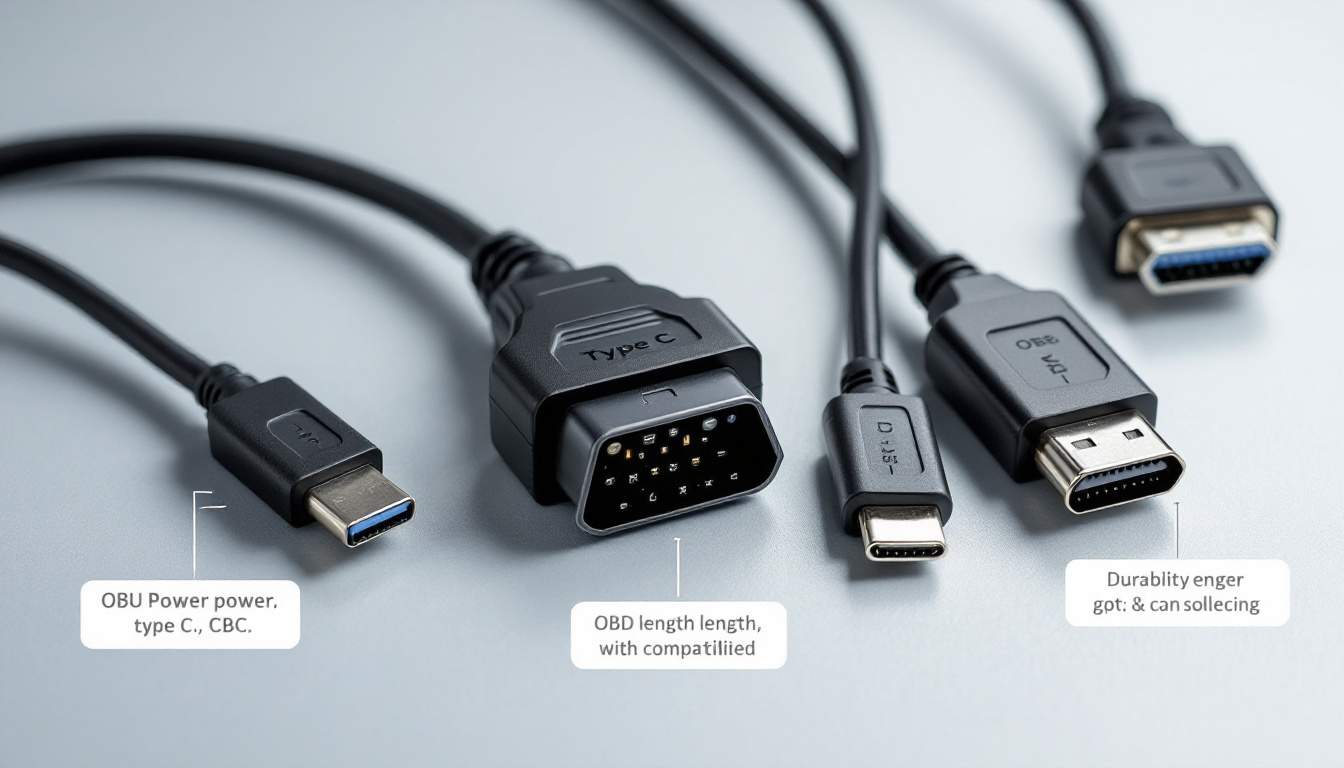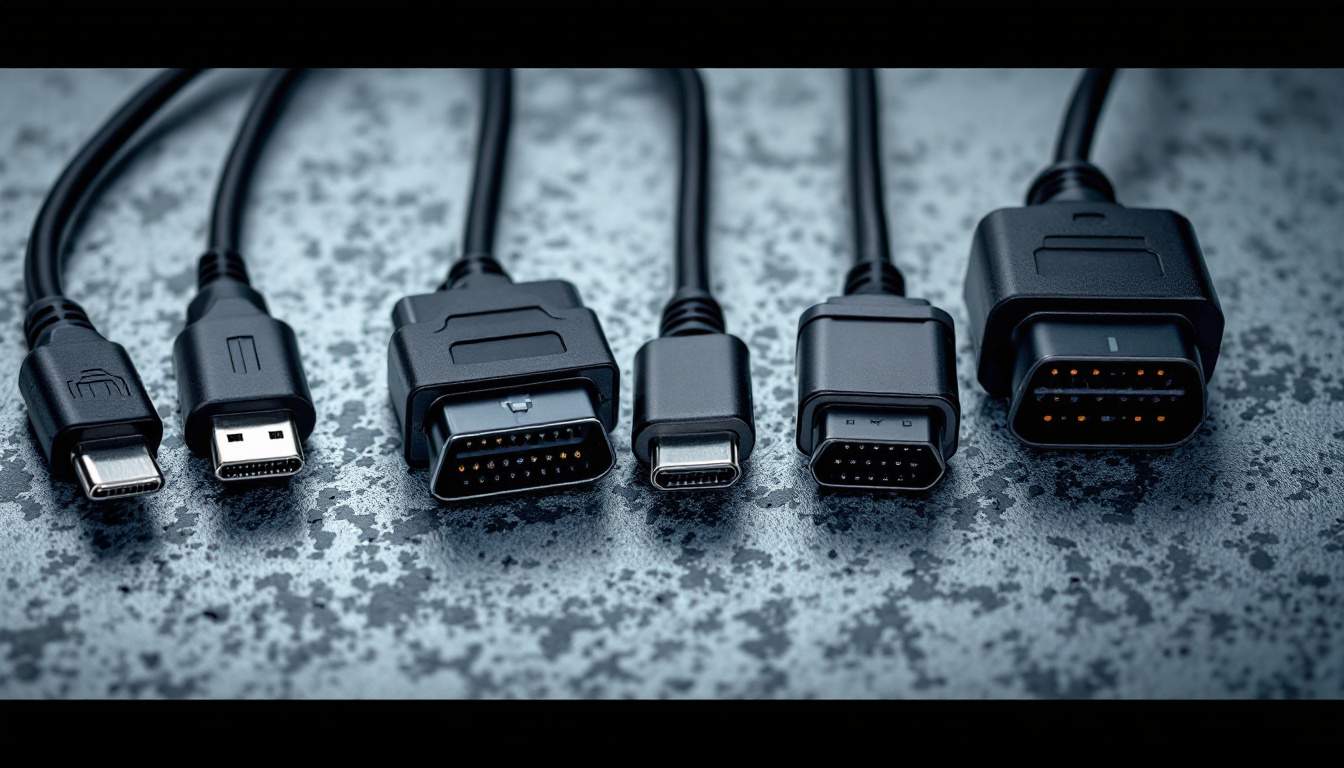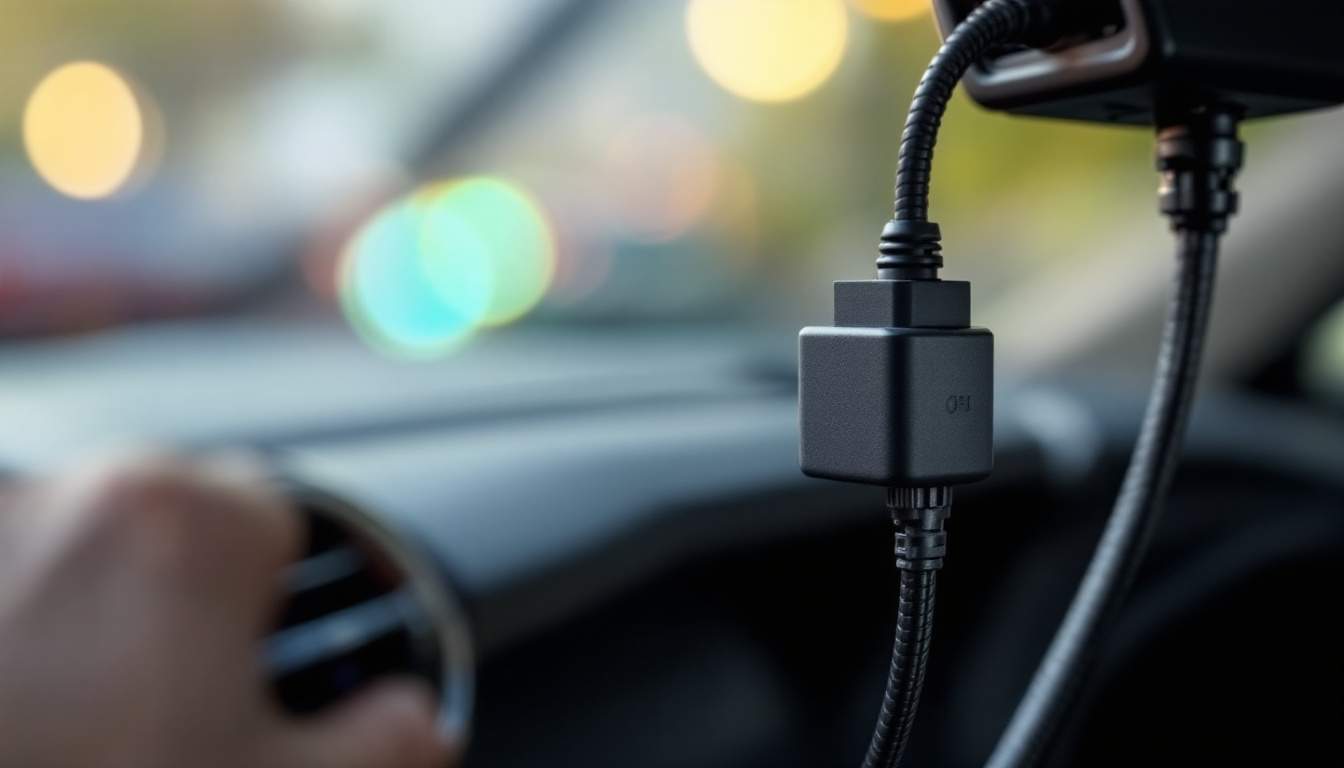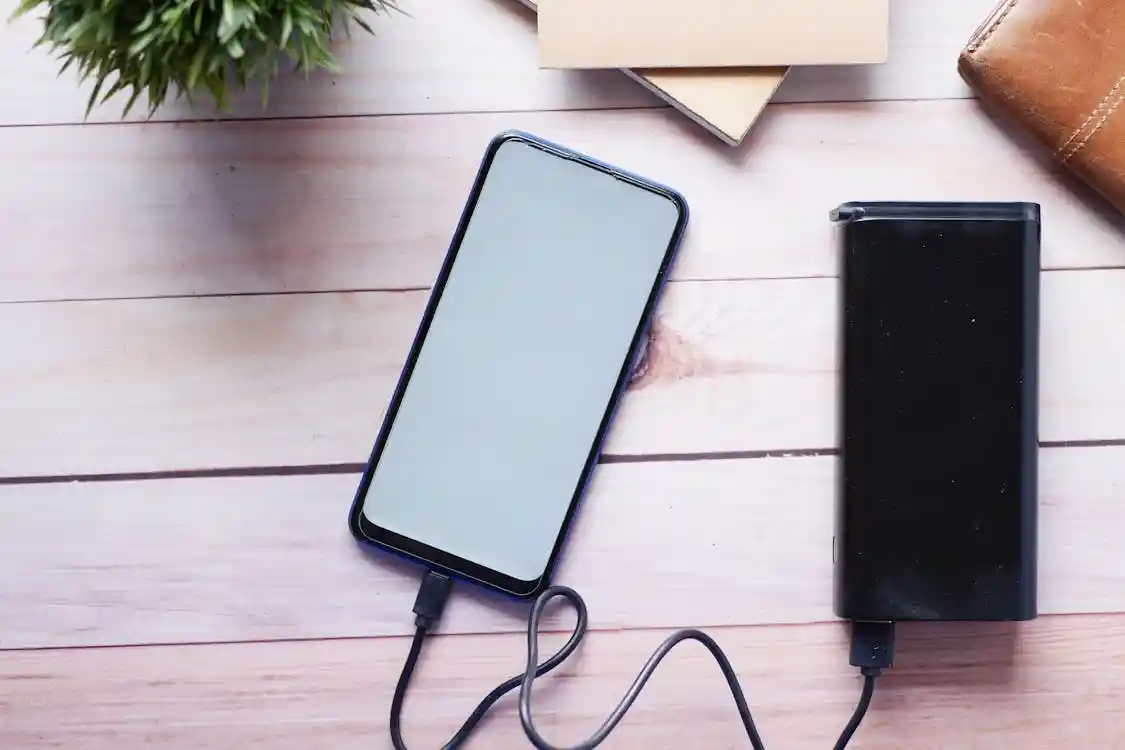Choosing the right OBD power cable for your Type C dash camera can significantly enhance its functionality and performance. Understanding the fundamentals of these cables, their features, installation, and troubleshooting common issues can help you make an informed decision.
Understanding the Basics of OBD Power Cables
OBD power cables serve as a critical link between your vehicle’s onboard diagnostics port and your dash camera. They provide a convenient source of power, allowing your camera to function without relying on an internal battery.
What is an OBD Power Cable?
An OBD power cable is a specialized accessory designed to connect to your vehicle’s OBD-II port. This port is typically located under the dashboard and is used for diagnostic purposes. By utilizing this connection, the power cable can draw energy directly from the car’s battery.
A standard OBD power cable features connectors that fit snugly into the OBD-II port, ensuring a reliable power source. This not only simplifies the power connection but also helps in maintaining the aesthetics of your vehicle’s interior. Furthermore, OBD power cables are often designed with durability in mind, featuring high-quality materials that resist wear and tear, ensuring a long-lasting connection that can withstand the vibrations and movements experienced while driving.
Importance of OBD Power Cables for Dash Cameras
The primary importance of OBD power cables lies in their ability to keep your dash camera powered on while you drive. Unlike other power sources that may require manual recharging, an OBD power cable ensures continuous operation of the dash camera, even during long trips.
Additionally, these cables often eliminate the need for complicated hardwiring, making installation straightforward. They allow for a neater arrangement of wires, improving the overall look of your vehicle’s cabin. This is particularly beneficial for those who value a clean and organized interior, as messy wires can detract from the overall aesthetic. Moreover, using an OBD power cable can enhance the functionality of your dash camera, enabling features such as parking mode, which allows the camera to record even when the vehicle is stationary, providing added security against potential incidents while parked.
Key Features to Consider When Choosing an OBD Power Cable
When selecting an OBD power cable for your dash camera, several key features should be taken into account. These features can affect the performance and longevity of the power connection.

Cable Length and Flexibility
One of the first considerations is the length of the cable. Depending on the placement of your dash camera and the location of the OBD-II port, a longer cable may be necessary. A flexible cable also allows for easier routing, accommodating the contours of your vehicle’s interior.
It’s crucial to balance between a cable that is long enough for your needs but not excessively long to create clutter. A cable that is too short will restrict camera placement, while one that is too long can result in tangling or interference with vehicle operation. Additionally, consider the potential for future vehicle modifications or upgrades that may affect the positioning of your dash camera. A slightly longer cable might provide the versatility needed for adjustments down the line, ensuring that you won’t have to replace the cable when you change your setup.
Power Output and Compatibility
Another significant feature is the power output of the cable. It must be compatible with your dash camera’s power requirements to ensure optimal functionality. Most dash cameras require a consistent voltage, typically around 5V, to operate effectively.
Compatibility with various vehicle models is also essential. An OBD power cable designed for a specific type of vehicle may not function efficiently in others, so always check compatibility before making a purchase. Furthermore, some cables come with built-in voltage regulators that can help manage fluctuations in power supply, which is particularly beneficial in vehicles with older electrical systems. This added feature can enhance the reliability of your dash camera, ensuring it remains operational even in challenging conditions.
Durability and Material Quality
The durability of the OBD power cable is paramount to withstand the varying conditions inside a vehicle. High-quality materials typically resist wear and tear, protecting the cable from damage over time.
Look for cables that feature robust connectors and shielding. This not only prevents electrostatic interference but also prolongs the life of the cable. Investing in a well-made OBD power cable can save you future replacement costs. Additionally, consider cables that are resistant to extreme temperatures and moisture, as these factors can significantly impact the performance and lifespan of the cable. Cables designed with weatherproof or heat-resistant materials are particularly advantageous for those who frequently drive in diverse climates, ensuring that your dash camera remains powered and functional regardless of the conditions outside.
Different Types of OBD Power Cables for Dash Camera Type C
There are various types of OBD power cables, each catering to different needs and preferences. Understanding these variations will help you select the right option for your dash camera.

Standard OBD Power Cables
Standard OBD power cables provide a simple and effective means of connecting your dash camera to your vehicle’s power supply. They contain basic features such as straightforward OBD-II connectors and a consistent power output.
These cables are usually the most affordable option and are well-suited for those who need a basic power source without additional features. However, they may lack advanced functionalities like voltage regulation. This simplicity often makes them an ideal choice for casual users who primarily want to record their drives without the need for extensive customization or monitoring. Additionally, standard cables are typically easy to install, making them accessible for users who may not have technical expertise.
Advanced OBD Power Cables with Additional Features
For those seeking enhanced performance, advanced OBD power cables come equipped with additional features. These may include integrated voltage regulation, fuse protection, or even smart technology that monitors power consumption.
Such cables are beneficial for more complex dash camera setups that require precise power management. Although they tend to be pricier, the investment can lead to superior functionality and reliability. Advanced cables often come with built-in safeguards that prevent over-voltage or short circuits, which can protect both the dash camera and the vehicle’s electrical system. Furthermore, some models offer compatibility with multiple devices, allowing users to power not only their dash cameras but also other accessories like GPS units or radar detectors, all from a single OBD connection. This versatility can significantly streamline the setup process and enhance the overall driving experience.
Tips to Install an OBD Power Cable for Dash Camera Type C
Correct installation of your OBD power cable is just as important as selecting the right one. Here’s how to prepare for and execute the installation process.
Preparing for Installation
Before you begin installation, gather all necessary tools and materials. Most installations only require the OBD power cable, but having zip ties or adhesive clips can help organize the cable once installed.
It’s also crucial to select a suitable location for your dash camera. Make sure it provides a clear view of the road while also being out of the way of the driver. Once your location is decided, ensure the OBD-II port is easily accessible for connection. Additionally, consider the angle of the camera; a slight tilt can significantly enhance the quality of the footage captured, especially during critical moments like sudden stops or accidents. Taking the time to position the camera correctly will pay off in the long run, as it can provide crucial evidence in case of disputes.
Step-by-step Installation Guide
- Locate the OBD-II port under your dashboard or steering column.
- Plug the OBD power cable securely into the port.
- Route the cable along your vehicle’s interior, ensuring it does not obstruct any pedals or controls.
- Connect the other end of the cable to your dash camera.
- Secure the cable with zip ties or adhesive clips for a clean look.
Once installed, test the connection by powering up your dash camera to ensure it receives power properly. If the camera does not turn on, double-check the connections and ensure that the OBD-II port is functioning correctly. It might also be beneficial to familiarize yourself with the camera’s settings at this stage; many dash cameras offer various modes and features, such as loop recording and G-sensor sensitivity, which can enhance your driving experience. Adjusting these settings according to your preferences can help you make the most of your dash camera’s capabilities and ensure that you capture the most relevant footage during your journeys.
Troubleshooting Common Issues with OBD Power Cables
Occasionally, users may experience issues with their OBD power cables. Understanding the common problems and their solutions can save you time and frustration.

Power Supply Issues
If your dash camera does not turn on despite being connected to the OBD power cable, the first step is to check the connection at the OBD-II port. A loose connection can hinder power delivery.
Additionally, ensure that the vehicle is turned on. Some dash cameras require a specific voltage or current, and vehicle accessories may need to be active for the camera to receive power adequately.
Connectivity Problems
Connectivity issues may arise due to several factors, including the quality of the cable or interference. If the camera experiences intermittent power, look for any visible damage to the cable or connectors.
Try repositioning the cable for a better fit or ensuring it does not contact any moving parts within the vehicle. If problems persist, testing with another cable may determine if the issue is with the cable itself.
By considering the key features, types, installation tips, and potential issues related to OBD power cables, you can enhance the functionality and reliability of your dash camera setup.










